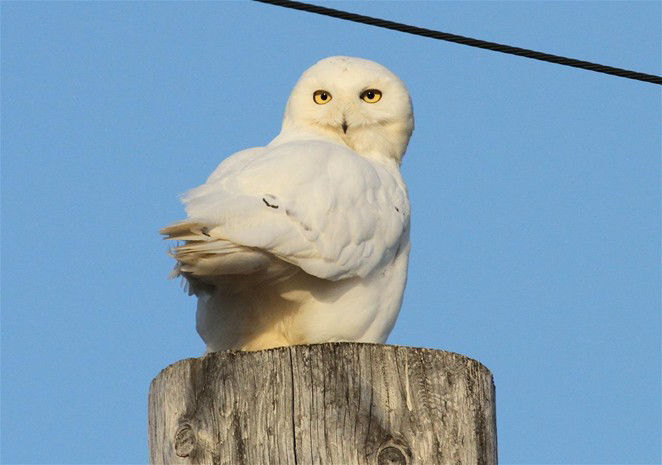Toll Free: 800.328.8368
Phone: 512.328.5221
Alaskan Fall Magic: Adak & Utqiagvik
Upcoming Dates
October 2 - 12, 2026
Departs
Anchorage
Returns
Anchorage
Tour Limit
7
Itinerary
Forthcoming

Ross's Gull © Declan Troy
A fall tour to two of Alaska’s premier birding locations—Adak Island and Utqiagvik—prioritizes observation of rarely seen birds of the far north, namely Whiskered Auklet and Ross’s Gull, among many others at a prime time of the year for migration.
Far out in Alaska’s remote Aleutian Archipelago, Adak Island offers a birding experience unlike any other—where dramatic landscapes and the prospect of exceptionally rare birds converge in one of the far north’s most compelling birding destinations. Historically overshadowed by the more famous outposts of St. Paul Island and Gambell, Adak has re-emerged in recent years as a must-visit location for adventurous birders looking for a level of comfort rarely found in such remote regions. The island’s varied habitats—coastal wetlands, mudflats, beaches, willow stands, rugged tundra, and rich offshore waters—attract a diverse mix of regular migrants, vagrants, and seabirds, as well as a few hardy residents. The elusive Whiskered Auklet, the most infrequently encountered alcid, feeds in the nutrient-rich waters around the island, and our plan is to pursue them by boat. The extremely rare Short-tailed Albatross is also possible here.
In early October, Adak Island offers an exciting mix of lingering migrants, early arriving wintering species, and the potential for Asian vagrants brought in by fall storms. Common songbirds include Pacific Wren, Snow Bunting, Lapland Longspur, and Gray-crowned Rosy-Finch, while flocks of Emperor Geese and Eurasian Wigeon graze the shorelines of Clam Lagoon. Occasionally Smew and Tufted Ducks appear for the winter, as does one of the most majestic of all waterfowl, the Whooper Swan. Recent fall tours have produced astonishing rarities, including a long list of Asiatic shorebirds, Common Pochard, Eurasian Bullfinch, Rustic Bunting, and Song and Naumann’s thrushes to name several standouts.
Meanwhile, on the northernmost reaches of the Alaska mainland, few bird species are more sought-after or more iconic of arctic realms than the lovely and enigmatic Ross’s Gull. For some decades now, it has been known that the bulk of the global population of Ross’s Gulls migrates past Point Barrow during a narrow three-week window each fall, as they move eastward from the Bering and Chukchi seas into the Beaufort Sea. By positioning ourselves along the coastline at Utqiagvik (formerly Barrow) during this window, we stand an excellent chance of encountering at least a few Ross’s Gulls, and if weather conditions are favorable for peak movements, we could be treated to a spectacle of up to 1,000 or more per day!
Although Ross’s Gulls will remain our primary focus during our time in Utqiagvik, there will be other special birds to look for. Among the possibilities are Spectacled and King eiders, Yellow-billed Loon, Short-tailed Shearwater, Red Phalarope, Black Guillemot, Ivory and Iceland gulls, Snowy Owl, and Redpoll. We will also remain alert to the possibility of some pretty special mammals, including Polar Bear, Arctic Fox, Walrus, and Bearded Seal.
Comfortable accommodations range from well-maintained duplexes (Adak) to hotel-style rooms (Utqiagvik); meals prepared by a local caterer at Adak and at restaurants (Utqiagvik); birding conditions generally easy with light physical demands; on Adak we will get around in four-wheel-drive vehicles and by passenger vans in Utqiagvik; birding excursions conducted from or near roads and include some lengthy sea watches; at least one boat trip planned at Adak into nearshore waters; both locations serviced by Alaska Airlines with reliable, regular flights from Anchorage.

Snowy Owl © Kevin Zimmer
Departure Dates
Route Map

Tour Leaders
Field Reports
Available by request; please contact the VENT office.
Connecting Tours
No Connecting Tours
Operations Manager

Erik
Lindqvist
Questions? Contact the Operations Manager or call 800.328.8368 or 512.328.5221



